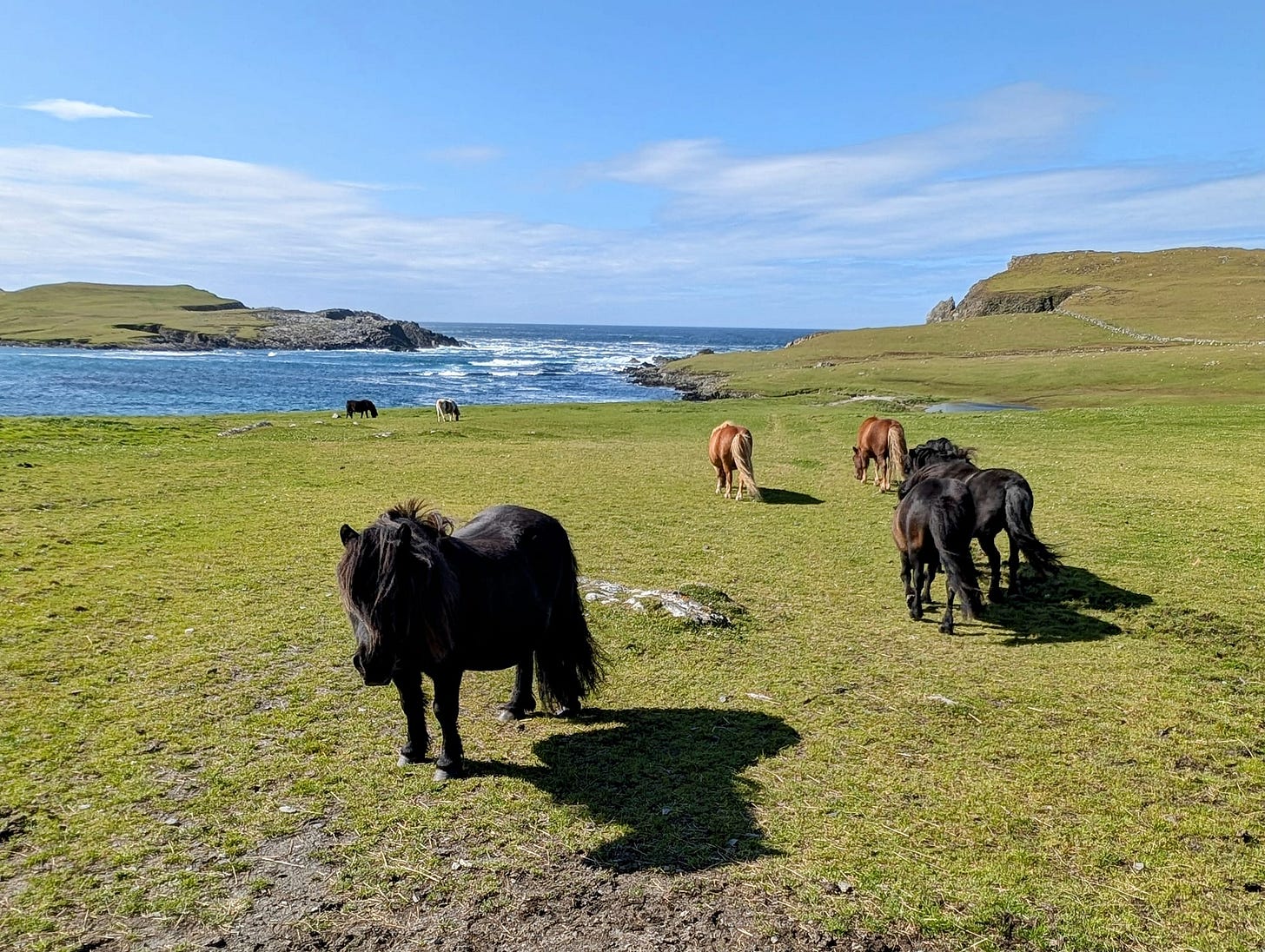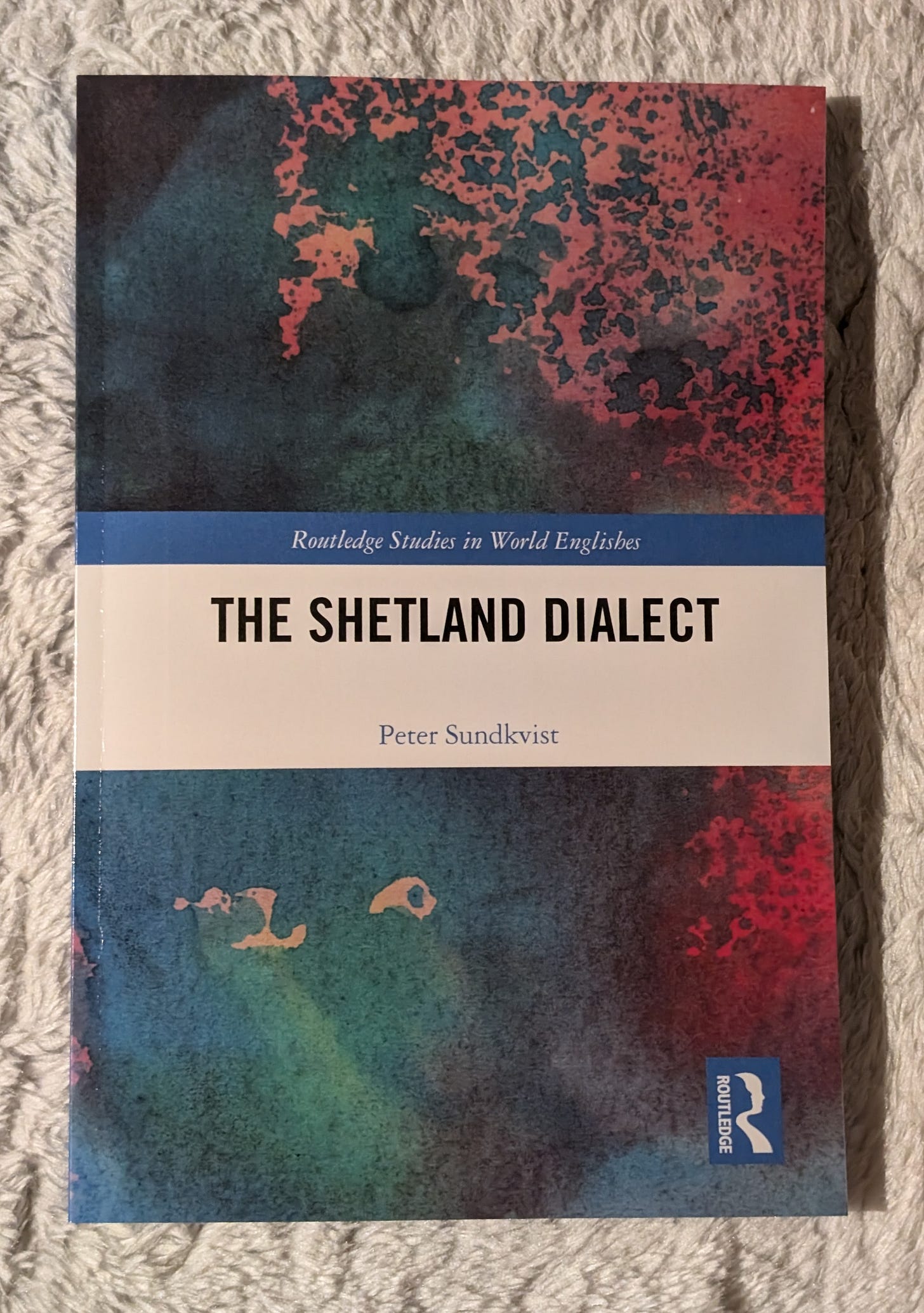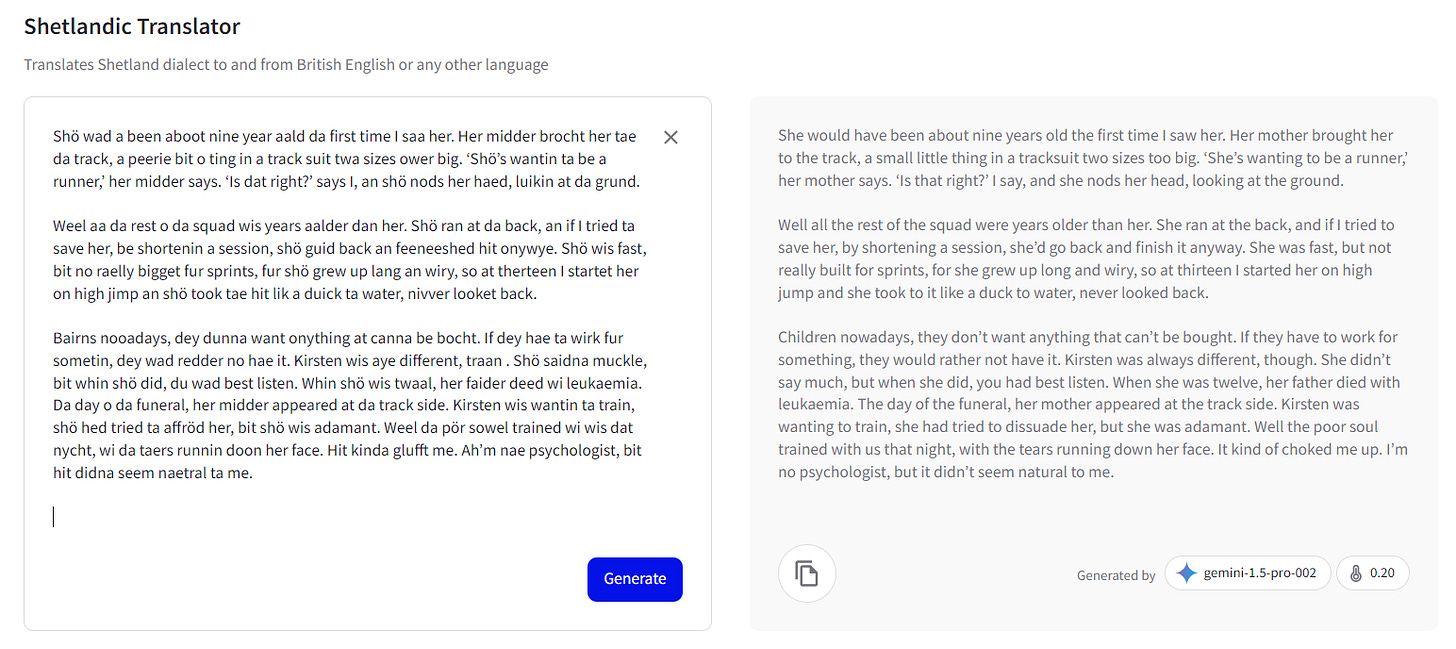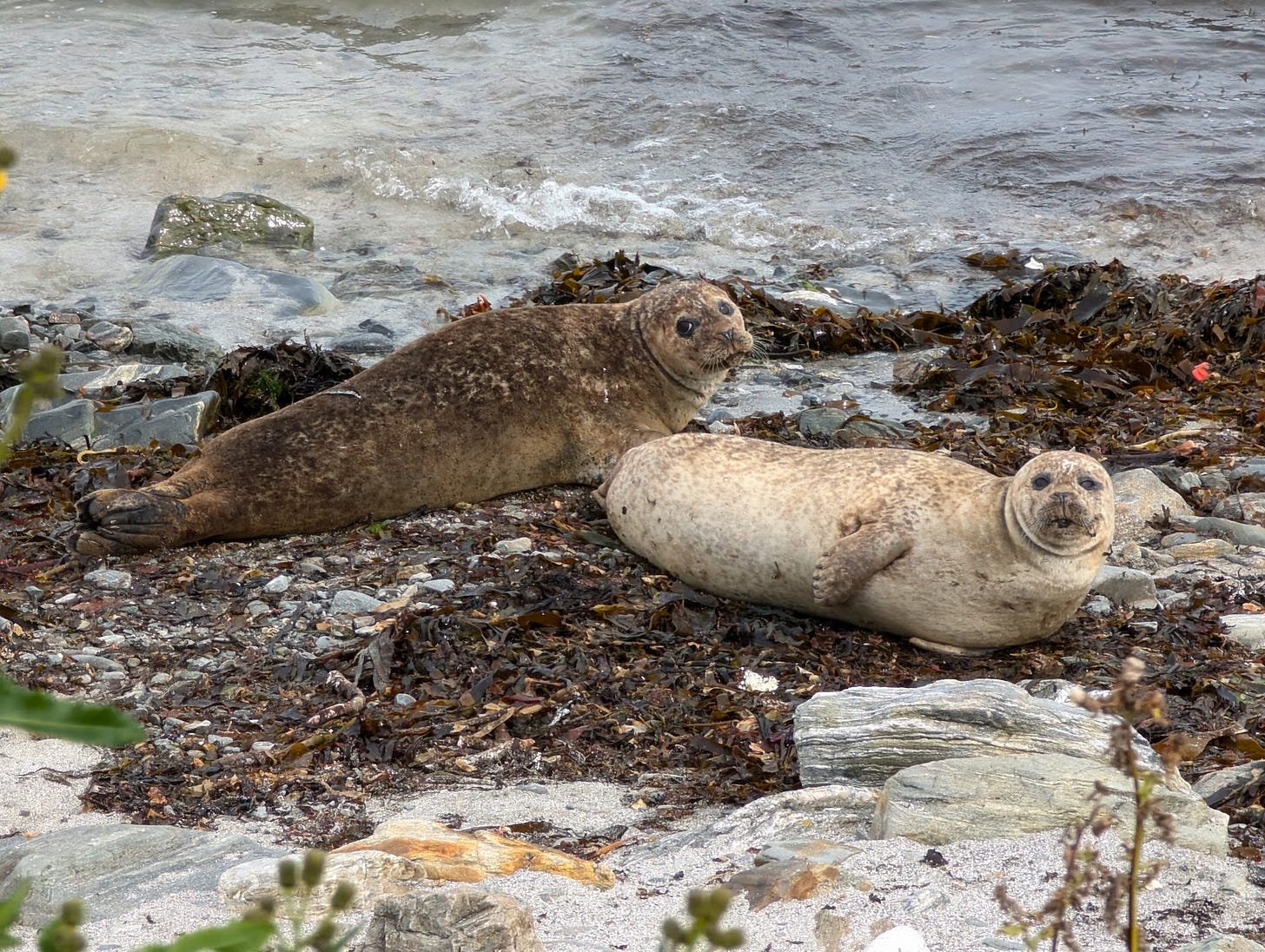Discovering Shetland(ic)
A Blend of Natural Beauty and Unique Linguistic Heritage
This summer, I visited Shetland and Orkney, the Viking Isles in the north of the UK. This post is about Shetland.
Nestled in the North Atlantic between Scotland and Norway, Shetland is a place of rugged beauty, captivating history, and a culture that has managed to preserve its own identity in an increasingly connected world. With its windswept coastlines, Shetland ponies, dramatic cliffs, and rolling green hills, Shetland offers a stunning landscape where nature and history intertwine.
Whether you're visiting the ancient rocks or observing the abundant wildlife, Shetland’s wild charm is truly unforgettable. And while the natural beauty of Shetland is undeniably breathtaking, what makes this archipelago even more fascinating is its unique dialect—Shetlandic.
The Shetlandic Dialect: A Living Piece of History
Shetlandic, or Shetland dialect (also described as Modern Shetlandic Scots by some linguists), is a distinctive form of speech that evolved from a Scots dialect with a degree of Norse influence, reflecting Shetland’s historical ties to both Scandinavia and Scotland. The dialect retains elements of Norn, the ancient North Germanic language developed from Old Norse spoken by the Norse settlers who arrived in Shetland over a thousand years ago. Even though Norn eventually faded from daily use in the 18th century, its legacy endures in the Shetlandic vocabulary, phonology, and syntax.
Walking through Lerwick, the main town, or venturing into the rural crofts, you’ll hear words and expressions that feel both familiar and foreign. Words like “peerie” for small, “blyde” for glad, or “Da Moarn” for tomorrow add a poetic cadence to conversations, preserving a cultural memory that is both rich and enduring. The cadence of Shetlandic has a musical quality, with its own rhythm and intonation that reflects the ebb and flow of life on these islands.
Despite its historical significance and vibrant cultural presence, only 3,500 native speakers use it at home, and 11,000 can speak it. Translating Shetlandic presents unique challenges. For one, Google Translate and other major online translation services do not support it. In fact, Shetlandic isn’t even recognized with an ISO-639 language code, which is a critical standard for identifying and categorizing languages. This lack of formal recognition makes it difficult to find automatic translation solutions for those who want to bridge the gap between Shetlandic and English, or any other language.
For example, if you take a text on Shetlandic (I used the first few paragraphs from John Cumming's short story Kirsten) and try to translate it using Google Translate, you have no success.
Google Translate does not support Shetlandic; it doesn’t even support Scots, a language with 1,5M speakers. The supported Scots Gaelic is a different language: Scots belongs to the Germanic language family (same as English), but Scots Gaelic is from the Celtic family (like Irish or Welsh). The Manx, another language from the Celtic family, was (wrongly) detected.
This presents a unique problem: Shetlandic exists as a living, breathing form of communication in Shetland, but it doesn’t have the infrastructure many larger languages enjoy in the digital age. So, how can we leverage modern technology to help translate this culturally rich dialect?
The Solution: Role-Based Translation with Large Language Models
This is where the power of Large Language Models (LLMs) comes into play. GPT by OpenAI and Gemini by Google can serve as effective tools for translating Shetlandic, even if the language lacks formal support. These models are not limited by pre-existing translation databases or ISO codes; they learn from huge web-scale training corpora and can adapt to the nuances of Shetlandic through instructions and role-based translation.
By using role-based translation techniques, you can instruct GPT or Gemini to act as a professional translator specializing in translating the Shetlandic dialect to and from ordinary British English or any other language. You can prompt the model to maintain the intended meaning, tone, and context of the original text while ensuring the translation is clear, accurate, and appropriate for the target language. You can also ask the model to provide explanations or clarifications for any Shetlandic terms or expressions that might be unfamiliar to the reader. The embedded multi-lingual capabilities and flexibility of LLMs mean they can be tailored specifically for Shetlandic translation, capturing the essence of what makes the dialect unique.
We eat our own dog food. To make this even more accessible, the Intento GenAI Portal simplifies working with these advanced models. The platform allows users to integrate GPT, Gemini, Claude, and many other production LLMs for translation purposes. It offers a seamless way to tap into their capabilities without needing deep technical knowledge. The Intento GenAI Portal supports creating custom LLM-based agents that are instructed for specific translation needs, making it easier for businesses, researchers, and language enthusiasts to bring Shetlandic to the world.
Here, I created a Shetlandic Translator agent according to these principles:
In just a few clicks, I created a role-based agent specializing in translations from Shetlandic. Now, I’m ready to test it on the same paragraphs from Kirsten:
The result is much better! I used Google’s Gemini here, but OpenAI’s GPT-4o also works well. Thanks to our existing ecosystem of connectors to different systems, the newly created agent can be used almost anywhere.
There are sometimes ways of creating custom agents on the corresponding platforms, like OpenAI’s Custom GPTs, or Google’s Gemini Gems. For example, I also made a custom GPT for Shetlandic translation, feel free to use it.
Imagine having a custom AI model that can translate between Shetlandic and English, preserving the charm and rhythm of the original dialect while making it accessible to a broader audience. Such a model could help bridge cultural gaps, preserve linguistic heritage, and bring a taste of Shetland’s linguistic beauty to anyone, anywhere.
In a world where local dialects often face extinction, Shetlandic is a reminder of the resilience of culture and language. And with the help of cutting-edge AI technology, we can ensure that the voice of Shetland continues to be heard, from its windswept shores to the global digital stage.








